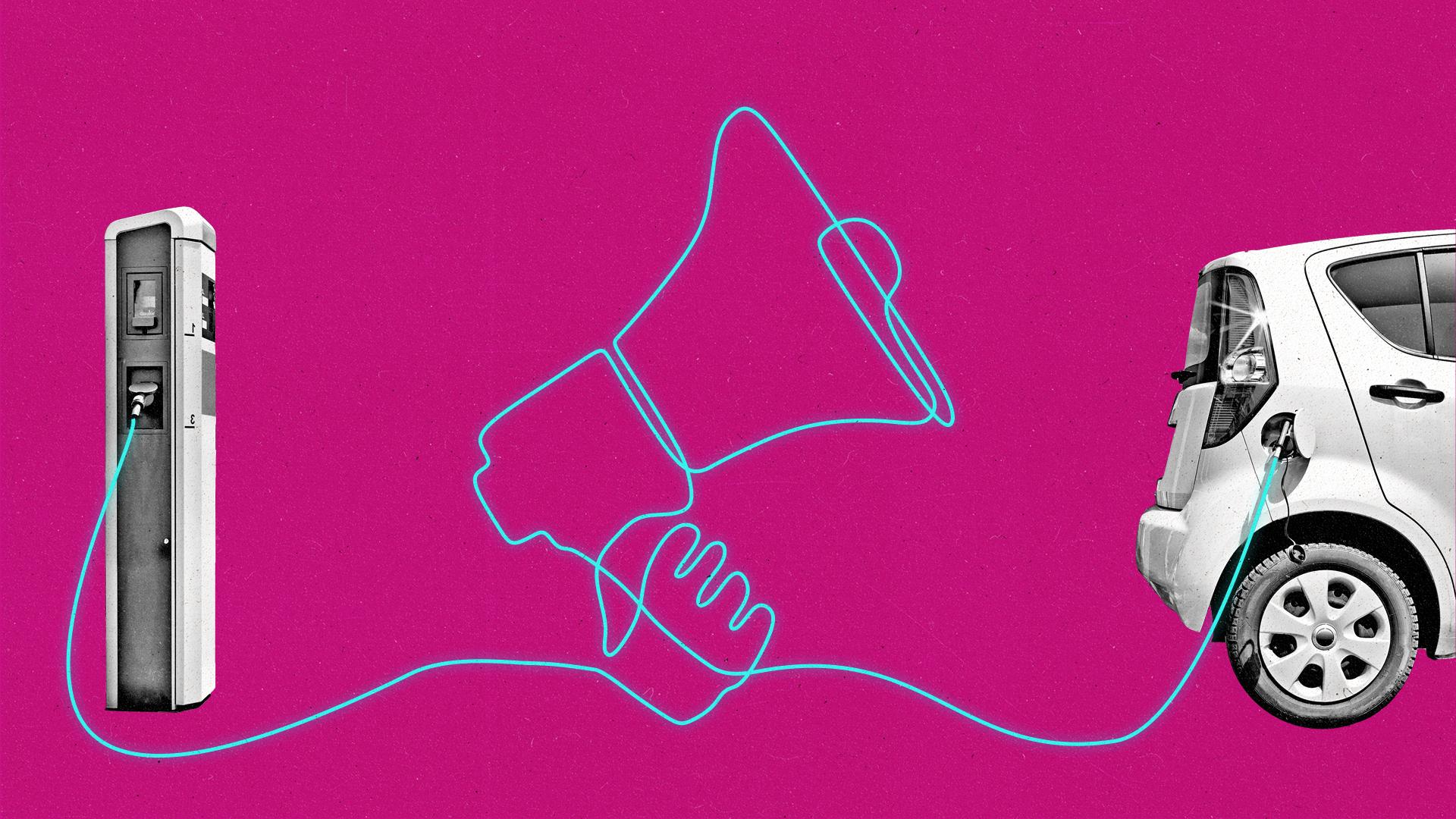Volkswagen, Hyundai are revving up their data strategy for an all-EV future

Illustration by Nick DeSantis / Getty / The Current
The electronic vehicle landscape is accelerating at a record pace, and brands like Volkswagen and Hyundai are racing to keep up.
About 39 percent of Americans say that the next time they purchase a vehicle, they are considering going electric. Brands like Volkswagen and Hyundai have major goals with their EVs to keep up with the demand, but reaching those specific audiences—who tend to skew younger and tech-savvy—at the right time, takes much more than a drive-by approach.
To that end, marketers from Hyundai and VW joined The Trade Desk during a recent panel — “Powering Your EV Marketing Strategy” — to discuss how data comes into play when targeting audiences on digital channels such as connected TV and social media.
For Volkswagen — which this year launches its first electric SUV, the ID.4, and intends to go all-electric in Europe by 2035, with the U.S. soon to follow — data becomes a vital method to keep demand in check and make sure the brand is reaching audiences who plan on making EV purchases now or in the near future. Kimberly Gardiner, senior VP of marketing at VW, said during the panel that the brand narrowed down its broader awareness play a year ago to be more strategic in reaching EV buyers.
“We had thousands and thousands of reservations before we even launched the vehicle, so we don’t want to waste any dollars in the terms of the investments we’re making in reaching people who aren’t ready anytime soon,” said Gardiner. “A lot of these channels now allow for that flexibility—to be able to create awareness where it makes sense and be much more targeted where it makes sense, and really dial-in and optimize the dollars we’re investing.”
Hyundai—which is committing to 12 EV models on the market by 2025, with a goal to have its entire lineup be electric by 2040—is using third and first-party data to inform what it’s calling a “demand-based approach,” said panelist Kate Fabian, director of marketing communications at Hyundai.
Rather than allocating ad spend towards a specific type of EV car category, Hyundai uses data to target and message customers based on how customers are shopping. “We have to use the data as best we can to generate leads and ensure that shoppers—in what I would call a very cluttered e-market space—are getting messages from brands that speak to them and assist them through their shopping process,” said Fabian.
Digital channels such as digital video, connected TV, and social media can work to brands’ advantage for such targeted approaches. There’s also another reason why digital channels makes sense for the EV market: A younger, tech-savvy consumer.
“They’re very in touch with digital media, with social, with AR experiences,” said Fabian. “We have to look at those opportunities and partner with big brands and mediums that really allow you to speak with them at their level, because if you continue to just look at traditional and linear media, you’re just not going to reach them.”
Overall, brands are ramping up their efforts across channels. EV ad spend has ballooned over the past year. While EV ad spend mostly disappeared in 2020, it grew to $33 million between January and July 2021, a 69 percent uptick from the $19.5 million spent in 2019 over the same seven months, according to advertising analytics platform MediaRadar. The segment is a growing — but still small — piece of the overall $2.9 billion automotive ad market.